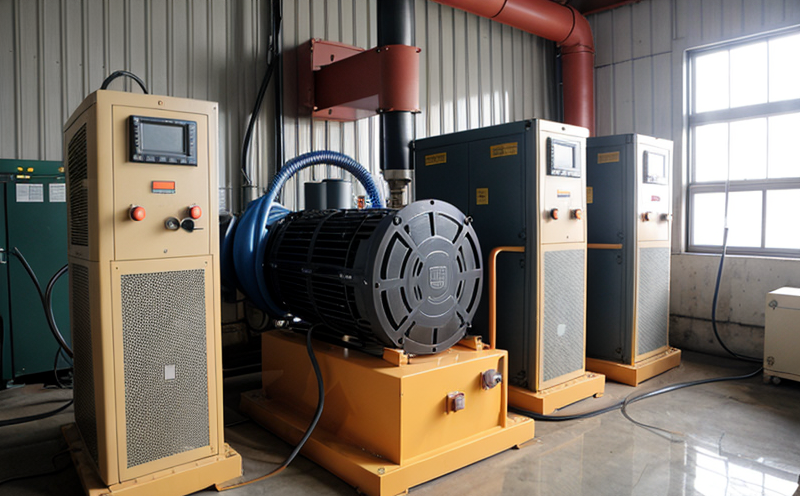ASME BPVC Boiler and Pressure Vessel Testing
The ASME BPVC (Boiler and Pressure Vessel Code) is a set of codes and standards for the design, fabrication, inspection, testing, and operation of boilers and pressure vessels. This service focuses on ensuring compliance with these stringent requirements, particularly under Section VIII Division 1 and II, which cover nuclear power plant components and non-nuclear power plant components, respectively.
Boilers and pressure vessels are critical components in the power generation sector, where they handle high-pressure fluids and gases. The ASME BPVC testing ensures that these components meet the highest standards of safety and reliability, thereby preventing potential accidents and ensuring regulatory compliance.
The testing process involves several stages, including design review, material evaluation, non-destructive testing (NDT), hydrostatic testing, and final inspections. These procedures are designed to identify any flaws or defects that could compromise the integrity of the equipment.
Non-destructive testing methods commonly used include ultrasonic testing, radiography, magnetic particle inspection, and liquid penetrant testing. Each method is chosen based on its ability to detect specific types of defects in different materials and structures.
The ASME BPVC testing process also includes a detailed review of the manufacturing processes to ensure that all steps are conducted according to the specified code requirements. This comprehensive approach ensures that every aspect of the equipment's design, fabrication, and assembly is scrutinized for compliance with the stringent standards set forth by ASME.
Once the testing and inspection phases are complete, a detailed report is prepared. This report includes all test results, observations, and recommendations for any necessary corrective actions. It serves as a valuable resource for quality managers and compliance officers to ensure that their equipment meets the highest safety standards.
The ASME BPVC testing process not only ensures regulatory compliance but also enhances the reliability and longevity of boilers and pressure vessels. By adhering strictly to these codes, power generation facilities can minimize risks associated with equipment failure and ensure safe operation under extreme conditions.
Benefits
The benefits of ASME BPVC Boiler and Pressure Vessel Testing extend beyond mere compliance; they contribute significantly to the overall safety, reliability, and longevity of power generation equipment. Here are some key advantages:
- Enhanced Safety: By adhering strictly to the stringent ASME BPVC standards, facilities can ensure that their boilers and pressure vessels operate safely under extreme conditions.
- Regulatory Compliance: Meeting ASME BPVC requirements ensures compliance with international safety regulations, thereby avoiding potential legal issues and fines.
- Increased Equipment Reliability: Regular testing helps identify potential issues early on, allowing for timely repairs or replacements before they lead to failures.
- Extended Equipment Lifespan: Through meticulous inspections and tests, the integrity of boilers and pressure vessels is maintained, extending their operational life.
- Improved Efficiency: By ensuring that equipment operates within specified parameters, ASME BPVC testing helps optimize performance and reduce downtime.
- Cost Savings: Early detection of defects can prevent costly repairs or replacements, while maintaining optimal performance reduces operational costs over time.
Why Choose This Test
Selecting ASME BPVC Boiler and Pressure Vessel Testing is a strategic decision for any organization involved in power generation. Here’s why:
- Global Recognition: ASME BPVC codes are recognized worldwide, ensuring that your equipment meets international standards.
- Expertise and Experience: Our team consists of highly skilled professionals with extensive experience in ASME BPVC testing. They bring a wealth of knowledge to every project.
- Comprehensive Services: We offer a full range of services, from initial design reviews to final inspections, ensuring that all aspects of your equipment are covered.
- Customized Solutions: Our team works closely with you to understand your specific needs and develop tailored testing plans that meet your unique requirements.
- Rigorous Quality Control: We employ state-of-the-art technology and methodologies to ensure the highest level of accuracy and precision in our tests.
- Customer Satisfaction: Our commitment to excellence is reflected in the consistently high satisfaction levels of our clients. We strive to exceed expectations every time.
Use Cases and Application Examples
| Equipment Type | Use Case | Application Example |
|---|---|---|
| Boilers | Testing for compliance with ASME BPVC Section VIII Division 1 and II. | A large coal-fired power plant undergoing a major overhaul of its boiler system. |
| Pressure Vessels | Ensuring the integrity of pressure vessels used in steam generation processes. | An oil refinery expanding its facility by adding new pressure vessels for the production of steam. |





